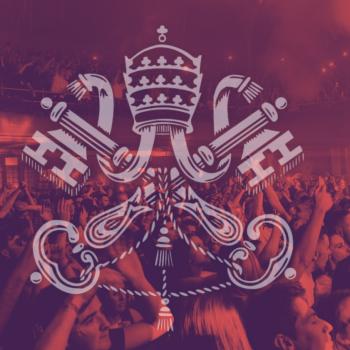I recently had the pleasure of reading Larry Eskridge’s remarkable God’s Forever Family: The Jesus People Movement in America (Oxford, 2013). [Full disclosure: Larry is a good friend and fellow Carolinian – though of the North Carolina variety – who has occasionally given me barbecue advice.] This book is the epitome of definitive, with rich, entertaining detail on all the key players and personalities that united 1960s/70s youth culture and evangelical Christianity. Anyone who has background in the Christian counterculture, the 1970s charismatic renewal, or the Calvary Chapel, Vineyard, or Willow Creek church associations, will feel a sense of reading one’s autobiography in this book. More broadly, the book is a must-read for anyone wanting to understand the shape of contemporary evangelicalism.
This latter claim is not an obvious one, when you consider that the Jesus People and related movements, per se, did not generally last more than about six or seven years. (Eskridge notes that the seminal 1976 Newsweek article on “The Year of the Evangelical” did not even mention the Jesus People.) But, in the book’s conclusion, Eskridge makes a compelling argument that the Jesus People were no “mere cultural flash in the pan.” They left an indelible mark in three areas: Christian music, evangelical youth culture, and American denominational life. On the first, Jesus People-affiliated musicians and music labels, such as Larry Norman and Maranatha! Music, broke down the barriers between secular pop music styles and Christian music, including new genres of in-church music, setting the stage for the dominance of worship artists such as Chris Tomlin and Hillsong today.
Second, the Jesus People withered the resistance of most evangelical congregations to American youth culture. Earlier tie-clad evangelicals balked at the emerging youth milieu of the 1950s and ’60s, but the Jesus People helped show denominational leaders – and especially youth pastors – that nearly any accommodation to teen style (seen in everything from Christian rap to hipster Christianity today) was permissible, assuming one did not compromise doctrine. (Some books like Tom Bergler’s The Juvenilization of American Christianity would probably date this shift somewhat earlier than Eskridge.)
Third, and perhaps the most striking, is the way that Jesus People-influenced denominations or associations have reshaped the American (and at least the English-speaking world’s) congregational scene. Calvary Chapel churches – led first by the recently-deceased Chuck Smith – were the most direct denominational legacy, with about 1400 churches in the world today. Other movements descended from Jesus People and Calvary Chapel movements include the more charismatic Vineyard Churches, pioneered by John Wimber, and perhaps most important, the Chicago-based Willow Creek Association. The flagship Willow Creek Community Church, which heralded the new seeker-sensitive evangelical trend of the 1980s and 1990s, came out of a Jesus People-influenced youth ministry called Son City. Willow Creek’s pastor Bill Hybels, arguably one of a handful of the most influential evangelical leaders of the past forty years, founded his new church in 1975 at the suburban Chicago Willow Creek movie theater.
Of course, there’s always a risk in any such movement that cultural fads will corrupt the purity of doctrine and gospel witness. But evangelical renewal, dating back to the Great Awakening, has always borrowed heavily from contemporary culture to explain and incarnate the gospel more effectively. The “psychedelic Christians” of the Jesus People were no different.
See also John Turner’s review of Eskridge, “They Got High on Jesus Instead,” Christianity Today












